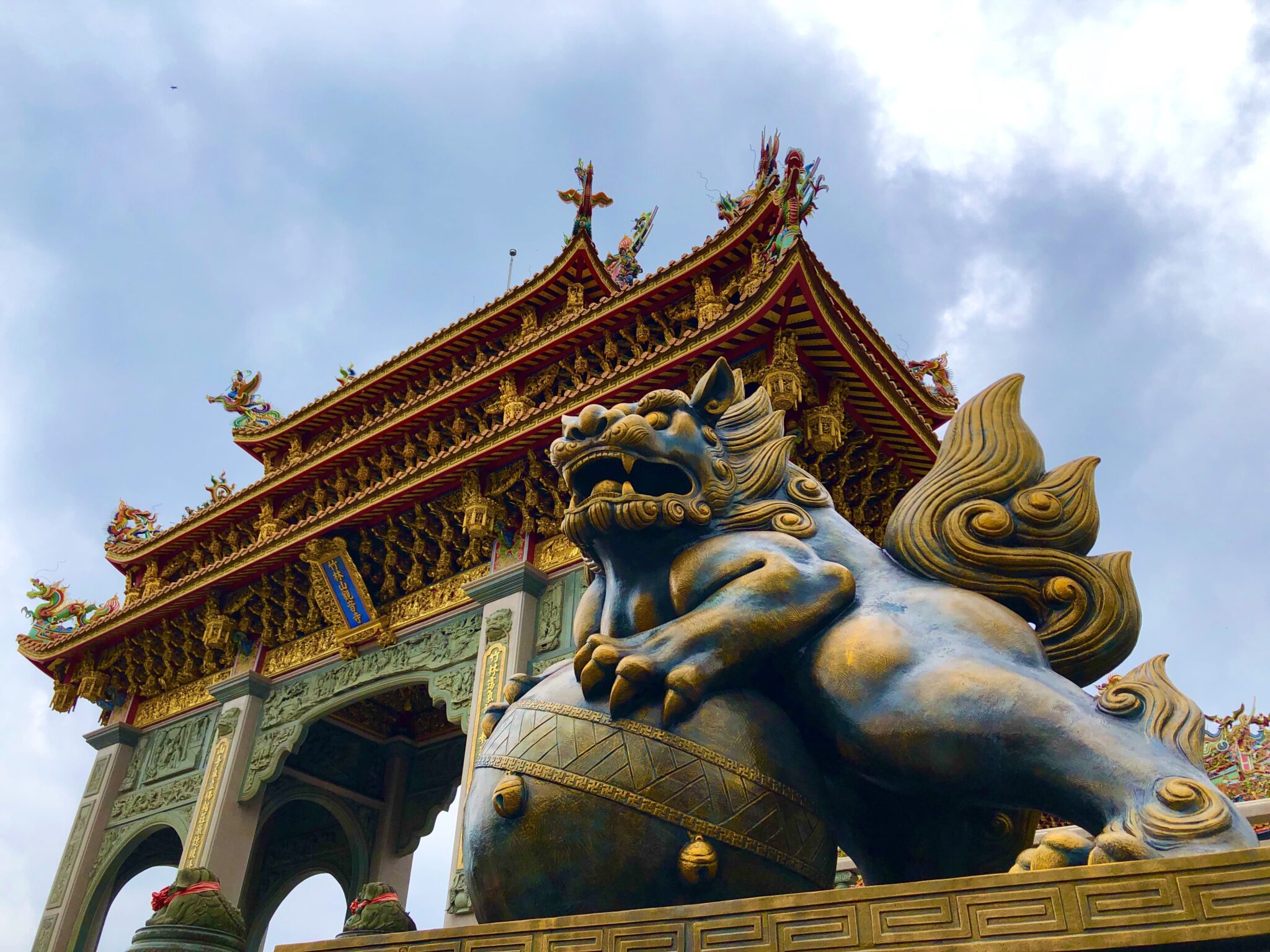A temple—as simple as it may seem—does a lot more than perform religious services in a city like Taipei, which appears intense in its urban design and the pace of modern life. Most temples house Taoism deities that were introduced to the island in the Qing dynasty; it was then the city started to grow and eventually took over Tainan’s dominance in the south in terms of economic and political significance. Later, however, after the rulers changed, these temples continually developed their connections with the surrounding communities and people, which together formed a unique, charming cultural landscape. Following their guidance, we shall explore the traditional area of the city and discover the traces of history hidden under the skin of modern Taipei.
We’ll start our day with a visit at Dalongdong Baoan Temple (大龍峒保安宮). As a national monument, the temple preserves all the details of traditional architecture and is worth a stop to appreciate: the layout, the materials, and the hand-crafted decorations. Constructed in the eighteenth century, the building has been restored several times, with the latest restoration taking place around the millennium. The building structures and the decorative designs were mostly repaired using traditional techniques, which allow visitors to discover the elegance of oriental classical art in every corner.
Now we hastily leave for the next stop! The neighboring traditional market is a great place to find delicious street food. I would recommend grabbing a drink at The Black Tea Drink House (紅茶屋). Their peanut smoothie tastes brilliant with its natural flavor. But it’s not made of peanut butter, but peanut rice milk. It’s something that will wake you up better than coffee does in the morning.
Heading south, we’ll move to Dadaocheng Cisheng Temple (大稻埕慈聖宮) for brunch. What I find particularly attractive about this Mazu temple is the food court right in front of the gate. The vendors reveal a local lifestyle illustrating how temples developed a unique status in commercial activities and social interaction. It’s also the reason why many of the townships in Taiwan are famous for their local shrines. Although their religious focus may be accessed by fewer people nowadays, their connection with the public has grown even stronger because they have redefined their own importance in people’s daily life even in a modern society.

The area of Dadaocheng (大稻埕), where Cisheng Temple is located, was once an economic center as a prosperous trading port in northern Taiwan. At its center, you’ll find remaining vestiges from numerous buildings constructed during the Qing and Japanese ruling periods. Under their historical skins lay countless stories that seamlessly interweave the destiny of the island. Dihua Street and its surrounding neighborhood definitely deserve time. Spending an afternoon here wandering its streets and lanes, you will discover the Old Town’s unsurpassed charm.
In spite of their classical, elegant appearance, many houses we randomly encounter here, in fact, bear historical burdens heavier than they seem. You’ll find Taian Hospital (大安醫院) once the place where Chiang Wei-shui (蔣渭水) and other contemporary intellectuals called for the Taiwanese collective identity under Japanese rule. Check out also the Taiwan New Cultural Movement Memorial Hall (臺灣新文化運動紀念館) for a closer look at those well-preserved cells, in which police used to torture prisoners. And don’t miss Tianma Tea House (天馬茶房), where the trigger for the 228 Incident took place, which resulted in a massive violent suppression that remains controversial even now.
Dadaocheng records both the beauty and sorrow of the past. Nowadays the area assembles food merchants, bringing modern vitality to the streets surrounding the Taipei Xiahai City God Temple (臺北霞海城隍廟) and Yongle Market (永樂市場). The Xiahai City God Temple is famous as the home of Yue Lao, the god of love and marriage in Chinese mythology. Interestingly, it was only fifty years ago that the temple installed the deity, though its history traces back to the early nineteenth century. Yue Lao nowadays attracts many young people who pray for a relationship and marriage.



When the sun begins to set, the old town offers plenty of food options that will satisfy your taste buds. In addition to the cafes and restaurants scattered around, you will also find snacks at the Pier Plaza. Here you can nibble while enjoying subtropical breezes by the Tamsui River. Do take Ningxia Night Market (寧夏夜市) into consideration; its Fang Chia Shredded Chicken on Rice (方家雞肉飯) has been consecutively selected in the Michelin Guide for several years, which makes it one of the most well-known street food vendors in Taipei City.
Before we call it a day, I would highly recommend walking a bit farther to Bosan Cafe (珈琲 寶山) and give their hand drip coffee a try. The two unique dark roast blends taste strong and complex, full of flavors that will linger in your mouth. The interior design pays tribute to Japanese kissaten, where even sitting still can become an enjoyable activity. Alternatively, you may head to the nearby Tiaotong district (條通商圈) on Linsen North Road and immerse yourself in a Japanese style nightlife— but that would be another story.



